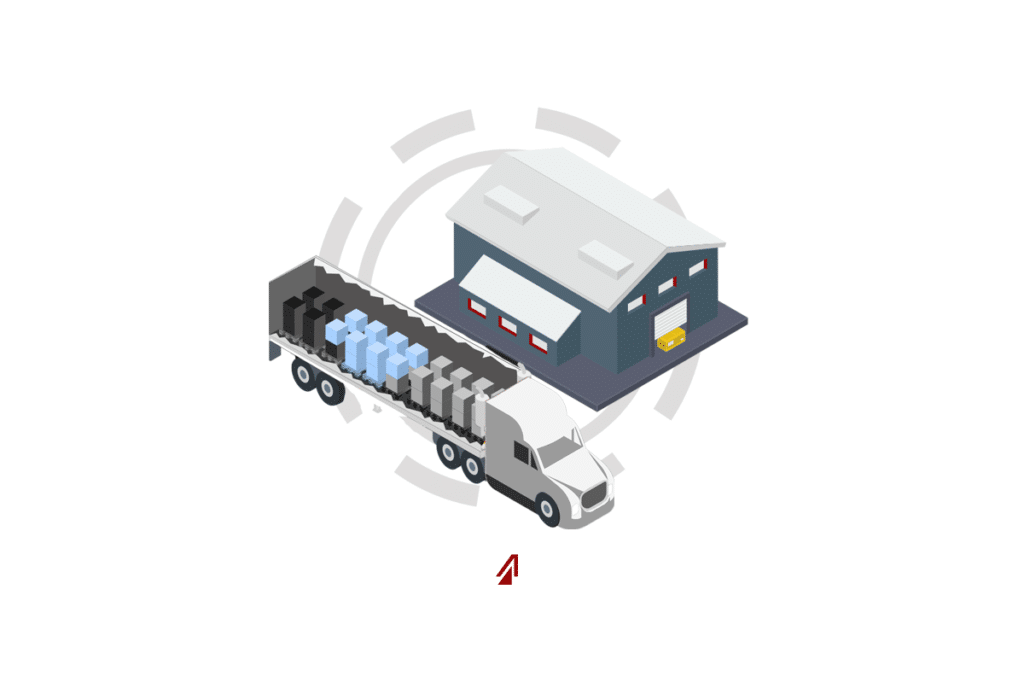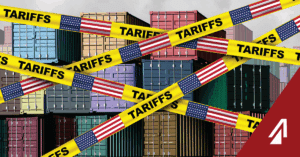Some of the strongest cost savings measures a company can have for their supply chain, today, is a strong carrier and facility network. These networks save companies considerably on costs and create supply chain success by creating options, establishing accountability, and meeting the companies’ specific needs. Individually, a strong carrier network or facility network can save a company on supply chain costs but combining the two networks creates synergy levels that are difficult to match.
A Strong Carrier Network
Companies can cut costs by working with a team that they trust. Unlike one-off carriers from load boards, strong carrier networks are a relationship between carriers and customers that offer reliability and accountability and can save companies money in both the long and short term. These networks accomplish this by offering accountable capacity and competitive cost structures to meet the customer’s needs.
Capacity
In today’s market, there are ebbs and flows of carrier capacity. Peak seasons or regulatory periods can limit the number of trucks or drivers are available and that drives up the cost. A strong carrier network can overcome limited capacity and offer savings. These networks can help their customers by offering:
• A nationwide network of carriers – These networks have reliable drivers in place all over the country and can count on them in busy seasons.
• Specialized equipment or requirements – Having a relationship with specialized carriers can save on shipping costs while also allowing customers to move freight when they need to and not waste money on downtime.
• “Tribal knowledge” – Customers can know where and when a carrier will be available, what lanes they prefer, and create a track record for the carrier’s service. Knowing this information can help create win-win situations for customers and carriers and save both parties in the short and long run.
• Multiple options – Strong networks not only have one carrier in place for loads, but often have multiple carriers who could handle a load. This is often necessary in recovery situations or when unforeseen issues take place.
Competitive Pricing
A strong carrier network can offer better pricing than one-off carriers in a few ways.
• Carriers volunteer it – Carriers are looking to develop relationships too, so they may give companies a price break to gain market share.
• Contracts – Many companies can save money by contracting carriers to lanes. Then, carriers are guaranteed freight, and customers are guaranteed capacity and rates. (this is particularly helpful in peak seasons)
• Keeping the truck moving – carriers make money when they drive freight, so by pairing lanes or keeping their trucks moving, carriers can offer better rates than if they must find their own loads.
The key to a strong carrier network is developing a relationship. The reason it can offer savings over spot-bid carriers is that carriers are looking for give and take. The more loads a company can provide, the better the rates will be. The relationship also provides accountability. Companies can save money by establishing better communication with their carriers and have better visibility on their loads. Carriers can alert their customers for milestones or when issues arise and allow the customers to be prepared and create contingencies as necessary. Spot-bid carriers may or may not offer that type of service.
Take advantage of our vast carrier network and pointed procurement strategy: LEARN MORE
A Strong Facility Network
A strong facility network can cut shipping costs as well. Companies can have a wide variety of needs and using the wrong facilities (or not fully utilizing the right ones) can cost them more than they need. The right facilities offer options companies need, where companies need them, at the size, scale and speed they need.
Wide Variety of Services
A strong facility network can offer a wide variety of logistics services that lead to savings. Some of the most popular services include:
• Consolidation and Distribution centers – Customers can use these facilities to ship LTL instead of wasting money on under-utilized full truckloads.
• Warehousing – Customers can save money by buying or creating parts or products in bulk and storing their freight until they need it.
• Trailer Pools – These can save time and money by temporarily holding freight offsite until a tractor can move it to its final destination. They help move carriers faster and that offers savings in downtime, detention, and other assessorial charges.
Strategically Located
Facility location is one of the most important cost factors as well. A strong facility network will have locations that are easily accessible and useful to the customer. Other considerations might be:
• Near major cities or freight areas – These can save money in fuel and transit time as well as make it easier for customers to send or receive freight.
• Easy access to customers, major roadways, and carriers – These make loads easier to run and more desirable for carriers.
• Sustainable – These facilities can save customers money on heating, water, and energy costs as well as be better for the environment.
Size, Scale, and Speed
A strong facility network can save customers money by offering options to fit any size company and help that company expand to meet its full potential. They may decide to start small and scale larger as the opportunity arises. Companies looking to save money can use tools like:
• Consolidation shipping for LTL shipments.
• Leasing warehouse space instead of purchasing.
• Outsourcing tasks like warehousing to other companies to take advantage of their facilities and workforce.
Each supply chain is unique, so it is important to have a options within facility network that can accommodate the customers’ needs. These options can help guide supply chain solutions that can save them money.
Our facility network creates consistent volume and efficient locations. Think you could benefit from our network?: LEARN MORE
Carrier and Facility Network Combined
Companies looking for a strategic advantage to deeply cut costs need the combined forces of a strong carrier and facility network. Together, they synergize and provide unparalleled value in a variety of ways including speed, reliability, and visibility.
Speed
Supply chain network speeds increase dramatically combining these networks. The key to speed is in the options that combining these networks provide; such as:
• Using a combination of local and OTR carriers for loads. Consolidation shipments, for instance, can use local drivers for pick up and delivery and OTR drivers for the long haul. These options are cheaper than using a full truckload OTR driver for LTL movements.
• High velocity facilities to move and process freight faster. Strong networks offer faster paced facilities to move freight ASAP and cut down on holding costs and downtime fees.
Reliability
Customers can also save money by having more reliable networks. Reliable networks have advantages like:
• Fewer freight touches and less damage – With a strong carrier and facility network, shipments make minimal stops and have reduced opportunities for freight to be damaged, unlike traditional hub and spoke networks or spot bid. That saves customers money.
• Physical Security – in a strong network, a customer’s freight is protected both on the truck and throughout the en route facilities.
• Security certifications – These certifications from 3rd parties proof a facility or carrier’s ability to offer security. When a customer utilizes that organization, they benefit from the cost saving privileges that the certified organizations have.
Visibility
One of the cost-saving strategic advantages strong networks provide is visibility. Visibility can help save customers money by:
• Keeping up-to-date contact with the customer – Staying on top of loads can help them make informed decisions, advise their customers, and avoid shipment downtime.
• Complete tracking – Many carriers offer vehicle tracking through GPS and top facilities track parts/shipments throughout their buildings via UPC or RFID. Customers can take that data and analyze their shipment methods to improve them.
Companies looking for savings need to incorporate strong networks into their supply chains. A strong carrier network can save customers money by offering them options, a competitive price structure, and building a relationship through accountability. Strong facility networks are essential as well to save costs while meeting customers’ needs and making loads easier to run. Combined, these networks synergize and offer speed, reliability, and visibility to cut costs even more. The options, accountability, and met needs these networks provide are the cost saving measures most companies need for their supply chain success.
Want to take advantage of our facility and carrier networks to gain logistics spend savings, efficiency, and reliability?: TALK WITH US



